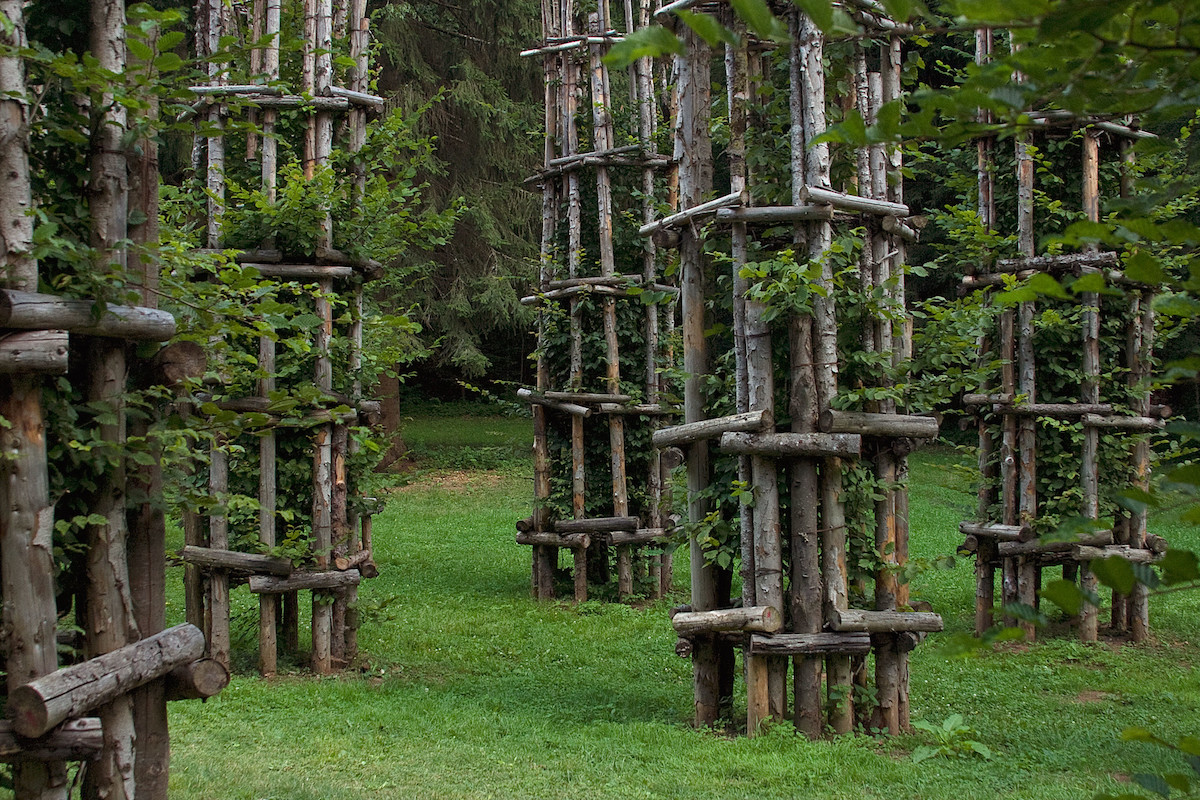Trentino, a region mainly known for its mountains and as a paradise for outdoor activities guards precious museums and historic monuments that allows you to retrace several stages of the history of Italian and international art, from the Middle Ages to today.
So if you’ve never thought of Trentino as a region for arts and culture, think again; and as the weather turns cold, and you find yourself in the area, take note of the following cultural sites.
Castello di Avio - Avio

The Avio Castle is one of Trentino’s oldest and best known fortified monument. It is located in the hamlet of Sabbionara d’Avio, where it overlooks the Vallagarina vineyards from atop a hill. Indeed, you can see the castle very well as you drive on the Autostrada, just as you get to enjoy a great panoramic view from the imposing mastio (castle’s keep) during the visit.
The fortress almost uninterruptedly belonged to the noble Castelbarco family who, during the Middle Ages, transformed it into a small feudal court, a gathering place for artists and intellectuals.
Make sure you see the perfectly preserved frescoes in the ‘Sala delle guardie’, painted between 1350 and 1360, which depict war scenes in striking detail.
Inside the keep, visit the ‘Camera di Amore’, decorated with 14th-century frescoes, which depict the ladies and knights of the Middle Ages, celebrating the ‘art’ of war and of courtly love.
Today the Castello di Avio is managed by the FAI, the Italian Environment Fund. During summer, numerous activities for families are organized.
Mart - Museo di arte moderna e contemporanea di Trento e Rovereto - Rovereto

An unmissable visit for art lovers, Mart is Trentino’s most important museum of modern and contemporary art, located in Rovereto.
The spectacular structure, designed by architect Mario Botta, houses a permanent collection of about 20,000 works by artists of the caliber of Hayez, Boccioni, and de Chirico, and focuses on the major artistic movements of the 20th century, in particular Futurism.
Botta and the local engineer Giulio Andreolli were inspired by classical models, in particular the Pantheon for the Dome. Under the dome is a square with a fountain in the center. In the case of the wall covering, Botta and Andreolli have chosen the yellow stone of Vicenza, traditionally used by Andrea Palladio.
The section dedicated to contemporary art is especially rich, with works by Pistoletto, Burri, Fontana, Merz and international artists such as Morris, Fulton, Abramovic. The museum hosts a rich calendar of temporary exhibitions, events and workshops, with family-friendly events as well.
To top it all off is Senso, an elegant bistro helmed by Trentino native, Michelin-starred chef Alfio Ghezzi, located right under the dome of the Mart.
Castello del Buonconsiglio - Trento

Only half an hour from Rovereto is the regional capital of Trentino, Trento. First take a walk in the historic center to to admire the Renaissance frescoes of the buildings that overlook Piazza Duomo. From the square, you can access the Tridentine Diocesan Museum which houses works of sacred art.
But if there’s only one site you have time to visit make it the Castello del Buonconsiglio, which is just a ten-minute walk from the main piazza. It is the city’s ancient fortress, housing a museum with archaeological finds and works of ancient, medieval and modern art.
For centuries the seat of the bishop princes, Castello del Buonconsiglio is Trentino’s most important castle, with marvelous frescoes and crenellated towers. Make sure you visit the Torre dell’Aquila, whose walls are frescoed with the famous "Cycle of the Months", a masterpiece of international Gothic art. Look out from the Venetian Loggia for a view of Trento from above.
Arte Sella Valsugana - Borgo Valsugana

This is a very interesting contemporary art installation - in nature. In the woods of the Sugana Valley, one of the most important valleys in Trentino, a short distance from the town of Pergine Valsugana, Arte Sella is an open-air contemporary art collection where 300 international artists have contributed since 1986 creating works that combine natural elements such as branches, leaves, trunks and soil, which change with the rhythm of the seasons.
There are different itineraries you can choose from. The Malga Costa area for example offers visitors the opportunity to immerse themselves in a large park to discover the site’s monumental works, including the ‘Cattedrale Vegetale’, built in 2001 with more than 3,000 branches intertwined in the forms of a three-nave cathedral, with eighty columns 12 meters high. Inside each column there is a hornbeam plant, which, in the artist's intention, once grown, should take the place of the current structure, destined to rot and disappear.
Chiesa di San Vigilio - Pinzolo

Lovers of medieval art should not miss the Church of San Vigilio in the mountain town of Pinzolo near chic Madonna di Campiglio, gateway to the Brenta Dolomites.
This church is a great example of the art of the Baschenis, a family of itinerant artists from the late Middle Ages, who painted the facades of many rural churches in Trentino, including in Val di Non and Valli Giudicarie.
The history of the peasant populations of Val Rendena is depicted in the Church, built with
granite stones from nearby Val Genova, and adorned with Ragoli marble and local wood for the altars.
The medieval facade is covered with frescoes from different eras; the most important and striking is the ‘Danza macabra’ by Simone Baschenis, considered the most qualified painter of the entire Baschenis dynasty. ‘Macabre Dance’ is a late medieval iconographic theme in which a dance between men and skeletons is represented.
The skeletons personify death, while men are usually dressed to represent the different categories of society, from the humblest such as peasants and artisans, to the most powerful, such as the emperor, the pope, and princes. The subject has the function of memento mori ("remember you must die”) and therefore to show that every human being is equal in the face of death.



